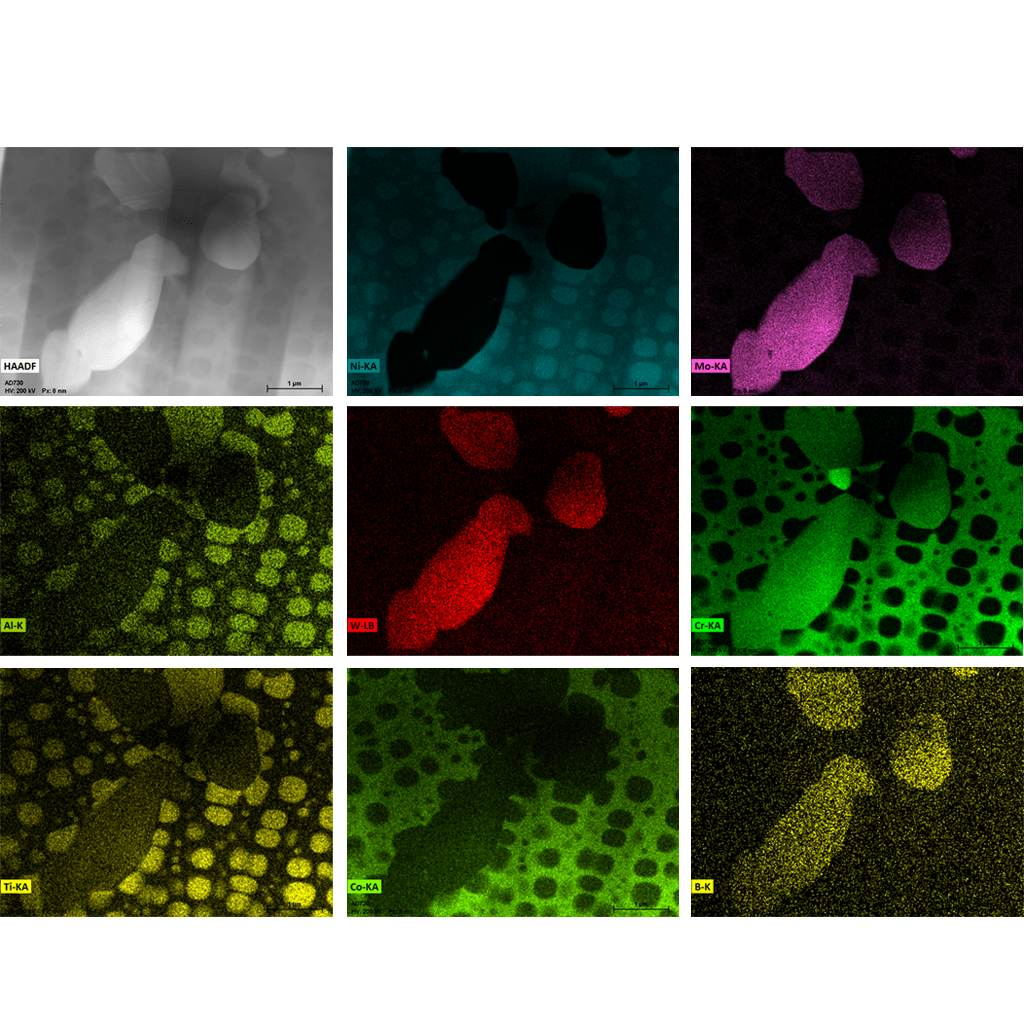Facilities
The laboratory has experimental facilities to synthesize and characterize several types of materials studied in our research projects such as transmission electron microscopy, X-ray diffraction, CVD synthesis,... In the field of numerical simulations, our computing resources are perfectly adapted to carry out modelling at different scales (from nano to macro).
Transmission Electron Microscopes (TEM)
The LEM hosts two Transmission Electron Microscopes (TEM) which cover a lot of techniques in imaging, diffraction or spectroscopy modes. Coupled with several sample holders (heating, cooling, two rotation), the microscopes cover a wide range of applications for materials studied by LEM’s researchers and its partners, such as nano-objects (nanoparticles, nanotubes, 2D materials), superalloys and ceramics.
A JEOL NEOARM S/TEM microscope operating at 200, 80, 60 and 30 kV is currently being installed. It combines low voltage microscopy (LV-TEM), physical field mapping (4D-STEM), and measurement of the dielectric function of materials (AR-EELS). The microscope is equipped with :
- A cold field effect gun (cold-FEG);
- A corrector for spherical aberrations of the probe (ASCOR);
- A piezoelectric goniometric plate;
- 2 EDS detectors covering a solid angle of 1.7 sr;
- A 4k CMOS bottom column camera (XF416);
- A segmented STEM detector (SAAF octa);
- STEM ADF and HAADF detectors;
- A post-column filter (CEFID) equipped with a 4k CMOS camera (XF416) and a MEDIPIX3 1k*512 camera (Cheetah).

Synoptic diagram of the S/TEM JEOL NEOARM microscope.
The laboratory is also equipped for sample preparation (3 gases plasma cleaner, PIPS with cryogenic stage, Tenupol) and uses SEM/FIB microscopy.
Computational Clusters
A significant part of the research in the laboratory is based on the development of modelling and simulation methods. The LEM has its own computational resources dedicated to the implementation and of these tools. Our computational resources are grouped into three main clusters configured for different needs (ab initio calculations, Monte Carlo simulations, molecular dynamics, dislocation dynamics, phase field method, finite element calculations). Our clusters are complementary with the centralized computational resources of ONERA and CNRS. A renew of 20 to 25% of our machinery is realized each year, to keep our clusters up-to-date.
 Computaional Clusters
Computaional Clusters
 Hall-Petch effect
Hall-Petch effect Dislocation displacement along a grain boundary
Dislocation displacement along a grain boundary Widmanstätten growth
Widmanstätten growth
X-Ray Diffractometer
The X-ray diffractometer set up within the framework of a SESAME convention is an equipment dedicated to the characterization of the atomic structure of materials. It is part of the materials analysis laboratory by X-ray diffraction of the materials and structures department (DMAS) of ONERA, and completes an EMPYREAN powder diffractometer and a LAUE assembly for single crystal orientation.
 X-Ray diffactometer
X-Ray diffactometer Laüe pattern
Laüe pattern Deviatoric strain component(εd), local misorientation (KAM) and grain orientation (α)
Deviatoric strain component(εd), local misorientation (KAM) and grain orientation (α)



